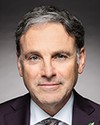Thank you, Mr. Chair.
Ms. Chalifoux and Ms. Bernier, in Quebec, we have what are called advance medical directives. They aren't yet widely known, and they very often apply to specific situations. For example, one can consider the desired level of care when a relative enters a CHSLD, which is a long-term care facility. Advance medical directives cover discontinuation of treatment, refusal of treatment, level of care, reanimation and so on, and that's not well known.
Shouldn't we develop an entirely separate process for advance requests for medical assistance in dying, as some witnesses have proposed? That would apply to neurodegenerative disease cases, where the stages of development are predictable and there's an established process and an entire team following the patient right up to the medical-assistance-in-dying stage.
Shouldn't the cases you refer to, strokes, aneurysms and so on, be covered by advance medical directives?
Conceptually speaking, wouldn't it be better to distinguish between the two mechanisms so we can move forward cautiously, as circumstances dictate?



